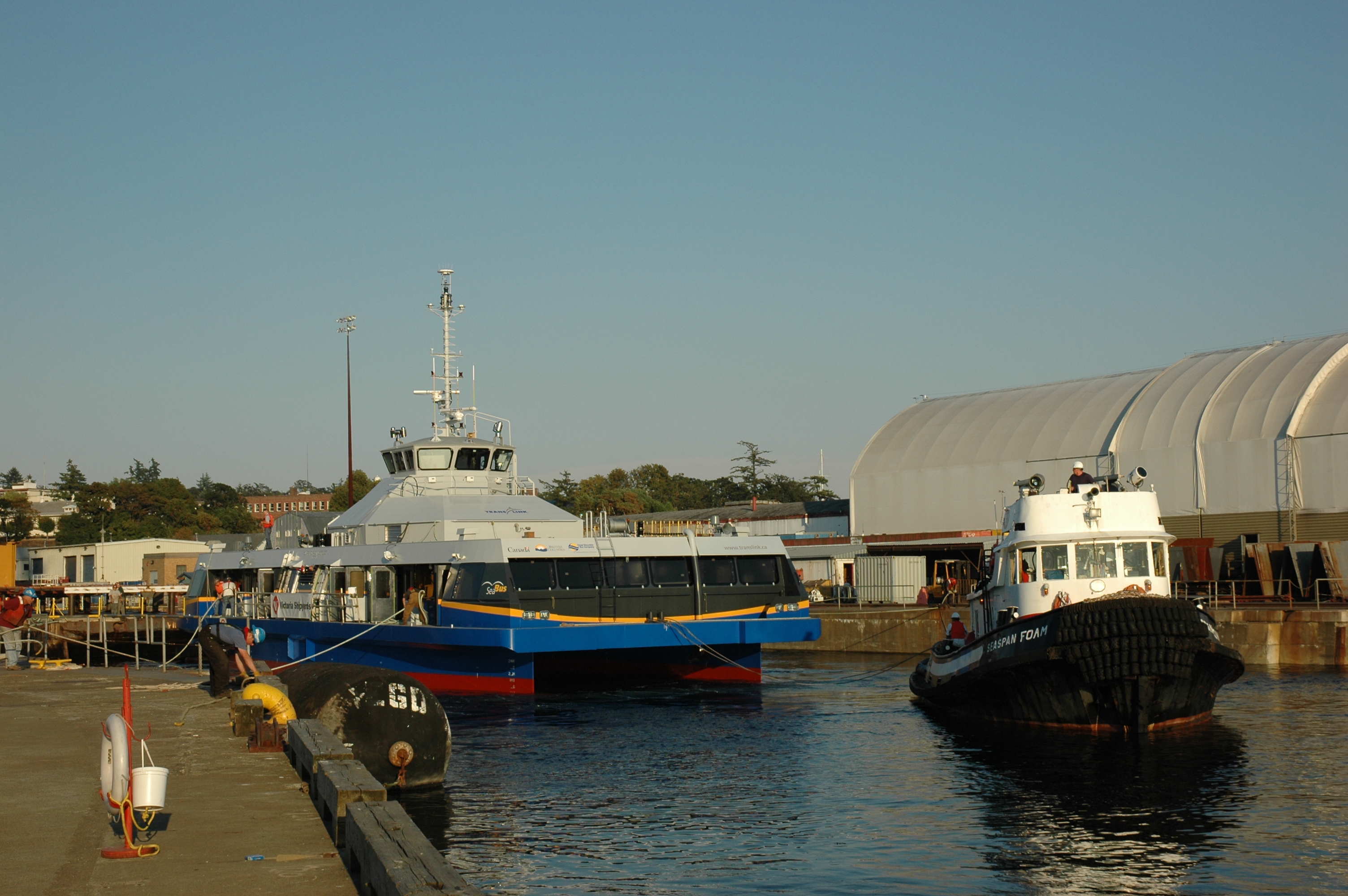The new SeaBus is in the water!
The new SeaBus is in the water!

It’s still being worked on and tested, but our new SeaBus is finally in the water at Victoria Shipyards!
A colleague in our fleet management department sent me this photo last week. Apparently the Burrard Pacific Breeze has a few weeks worth of work before it’ll be complete and able to operate under its own power. I’m told the christening ceremony is usually held immediately prior to the launch of the vessel; but in our case, it was a few days beforehand.
So, right now the ship is still missing seats, ceiling panels, wheelhouse controls, and tons of wiring. They’ve got electricians working 24 hours a day to get the boat wired up and ready to go. And late next month they’ll start doing functional tests!
As well, if you’re interested, my colleague Drew Snider has some more video of the SeaBus christening over at his blog, Vancouver on the Lines. All the christening videos can be found at the TransLink media relations YouTube account.






what is this i read in the 10 year plan that the Burrard Beaver and otter will be replaced in the next 10 years even though they are getting overhauled. within the next year. It seems to me like a waste of money and a waste of a new paint job as well. This actually scares me as well that almost 1400 buses will be replaced in the 10 year plan. (That is the whole bus fleet) Jhenifer can you confirm what is happening with the Beaver and Otter?
Yay! She’s seaworthy! :)
In that image, it appears the Breeze rides much higher out of the water than the Otter or the Beaver.
I didn’t expect to see the red markings. Then again, the seats and other heavy accessories aren’t installed yet.
Dan: I’ve asked our planning department to clarify the situation around the SeaBuses, and here’s the response.
That replacement vessel is the new breeze. They kept on saying it was added to the fleet. Now we know its a replacement. This was NEVER mentioned at any time that it was being replaced and is extremely sneaky. Im disappointed on this whole plan cause NONE of this was mentioned at any time in the “Be Part Of The Plan” I am really starting to loose faith in what translink says now.
Makes sense it would be higher out of the water given that there’s no interior yet – the weight of the wiring alone is probably as much as a small car once it’s all in there.
Replacement of the SeaBus fleet rather than the previously discussed expansion is quite a surprise…
Hi Dan – while your complaints may be valid, I don’t think this is the right forum for airing them. Few of the readers of this blog come here for that type of information.
Plus, I would hate to see this blog’s existence jeopardized because I am sincerely interested in what Jhenifer writes.
Shane: This is not a complaint nor This has nothing to do with Jhenifer. Im actually happy she dug up this info (Keep up the great work cause I enjoy reading this blog). This is actually really a huge concern. But as taxpayers we have the right to know. this was extremely sneaky by managements part of replacing the SeaBus fleet when nothing was noted until less than a week ago to the public. And now they say they need more money. Public trust will go a long way.
I believe the analysis that judged two replacements necessary only came up a while ago? It’s very odd timing to be honest to have that idea surface at the same time that TransLink is asking for more money.
I also sort of wonder about the Seabuses’ short lifespans, as some older ships from the 1960s still ply local waters (e.g. Queen of New West of BC Ferries) and these ships dates back to the 1970s from what I can gather on Wikipedia. Is this due to the design of the ferries (being aluminum catamarans rather than steel mono-hulls)?
Allan: You’re right — the analysis judging two replacements necessary came up in the recent past. Here’s some info from our fleet management group.
Jhenifer, Do we have a dollar amount on how much the overhauls would have cost? Cause all I keep hearing it’s too expensive…
What jumps out at me from Jhenifer’s information is how expensive the community shuttles are. If they’re half the price of a 40-foot bus, but have less than half the lifetime, then their capital cost is actually higher. Driver wages are the same so unless the fuel savings are enormous, the community shuttle program is costing TransLink more than it would to drive full size buses everywhere.
Thanks for the info. I am still curious though as to what may be the reason behind the ships’ lifespans compared to other older ships, although then again I might just be comparing apples to oranges. >.<
Burrard Pacific Breeze has the new translink website on it!!!
David: In fact, driver’s wages are not the same. Community shuttle driver’s earn approximately 80% that of a conventional driver, (likely due to the size of the vehicle and the license required to operate it). There are also considerable benefit differences as well.
Allan: here’s the answer to the second half of your question, thanks to my colleague in our fleet management division.
Re: Drivers wages, Community Shuttle Operators do NOT make the same wages as Conventional… ANd they earn less in benefits and don’t earn Travel time either… And they do more getting the bus ready than Conventional Ops too…